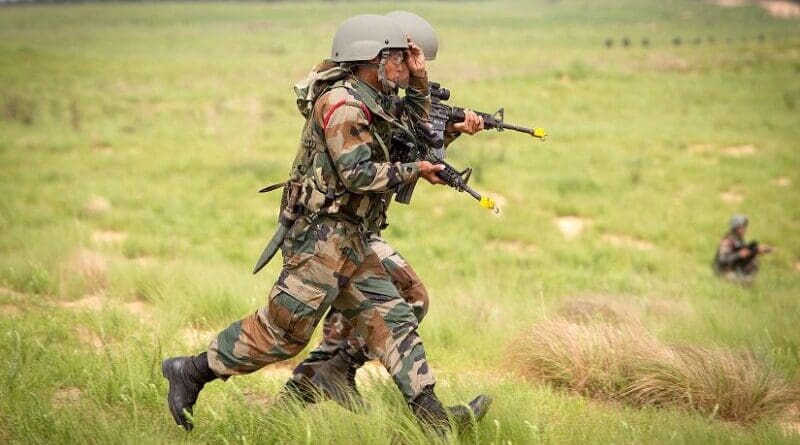Modi Reimagines The Indian Military – Analysis
By Observer Research Foundation
By announcing the creation of a chief of defense staff, New Delhi hopes to modernise India’s armed forces.
By Harsh V. Pant and Kartik Bommakanti
In mid-August, Indian Prime Minister Narendra Modi announced his government’s decision to appoint a chief of defense staff (CDS), who will act as head of the Indian Army, Air Force, and Navy. The announcement, which was surprising since the ruling Bharatiya Janata Party’s 2019 manifesto barely made mention of defense reforms, much less committed the party to establishing a CDS, was long overdue.
The Indian strategic community had long sought the establishment of a CDS. The latest version of the idea was initially proposed in 2001 by a group of ministers tasked with reforming India’s national security apparatus in the aftermath of the 1999 conflict with Pakistan in Kargil, where the Indian response was hampered by a lack of coordination among the services. Supporters claimed that a CDS would help the armed services execute joint operations more effectively.
But some civilian detractors believed that the creation of such a role would edge them out of military planning and operations, since the person who holds the position would likely be a high-ranking officer from one of the three services. Civilian control of the military has been staunchly protected since the days of India’s first prime minister, Jawaharlal Nehru, who pushed aside earlier efforts to create a CDS-like role in the 1960s. Other opponents to the CDS argued that, since the armed services wield considerable autonomy on operational matters, a singular military advisor to the government might only get in the way.
In the end, opponents won out, and the CDS was scuttled for years as entrenched bureaucrats and the different armed services tried to protect their turf. Yet the lack of a CDS prevented real budgetary prioritisation and the streamlining of acquisitions, and it undercut integrated planning between the three services on operations, logistics, and doctrine. It also prevented the three from offering coherent advice to the civilian leadership. Consequently, the Indian military’s readiness for conflict has suffered.
Modi’s efforts to address these problems are timely. In India, defense reforms have become imperative as the nature of the national-security threats facing the country change. China, for one, has made impressive strides over the last two decades, better equipping its forces while also reforming its command-and control-structure and establishing integrated “theater commands,” which are meant to give the branches of the Chinese military better ability to prosecute joint operations. Today, China has a greater capacity to rapidly mobilise complex operations across the Tibetan Plateau and along the Sino-Indian border—which makes India nervous.
Pakistan, too, poses problems for India’s defense preparedness. Heavily militarised and partnered with China, it has been able to use its nuclear weapons as cover for smaller scuffles with India. In addition, Pakistan’s shorter interior lines of communication help it mobilise its forces more rapidly, giving it an advantage in attacks. A well-coordinated joint military attack by China and Pakistan against India is the worst conceivable military scenario facing military planners in New Delhi.
Meanwhile, Modi won reelection this May with an even bigger mandate than in 2014, giving him the credibility and authority to pursue this particular defense reform. In the last five years, he had repeatedly emphasised the need for Indian forces to operate with greater “jointness.”
To be sure, the appointment of a CDS isn’t the only reform going on. Prior to Modi’s announcement, Bipin Rawat, the head of the Indian Army, the largest of the three military branches, announced a slew of reforms to streamline his service. One was the reassignment of over 200 officers at the army headquarters to field units. He also added a third deputy chief (this one responsible for strategy), who will control the army’s military intelligence, information warfare, and other operations units. The other two deputy chiefs will oversee capital procurement (new hardware acquisitions) and information systems and training. Rawat has also announced plans to appoint a major general rank officer with investigative powers to ensure transparency, prevent corruption, and report directly to the army chief.
The army, being the largest of the three services, tends to attract a lot of attention when it comes to modernisation efforts, but other two services too are moving in that direction as well. The Navy has also introduced changes to its training, operations, and organisational philosophy. It is deploying mission-ready ships for protecting sea lines of communication and choke points in the Indian Ocean region. The Air Force, for its part, faces challenges because it tends to place greater bets on capital-intensive imports that leave India vulnerable to pressures from suppliers.
Given India’s defense challenges, the mere announcement of the CDS won’t be enough. Modi will also have to clearly define the job’s role and responsibilities. He’ll also need to implement reforms to integrate each services’ headquarters within the ministry of defense. The services, meanwhile, will have to shed their parochialism and get used to working together. If they do, India will be better positioned to confront its competitors—and to achieve its ambition of having a military capable of fighting the next generation of wars.
This article originally appeared in Foreign Policy.

